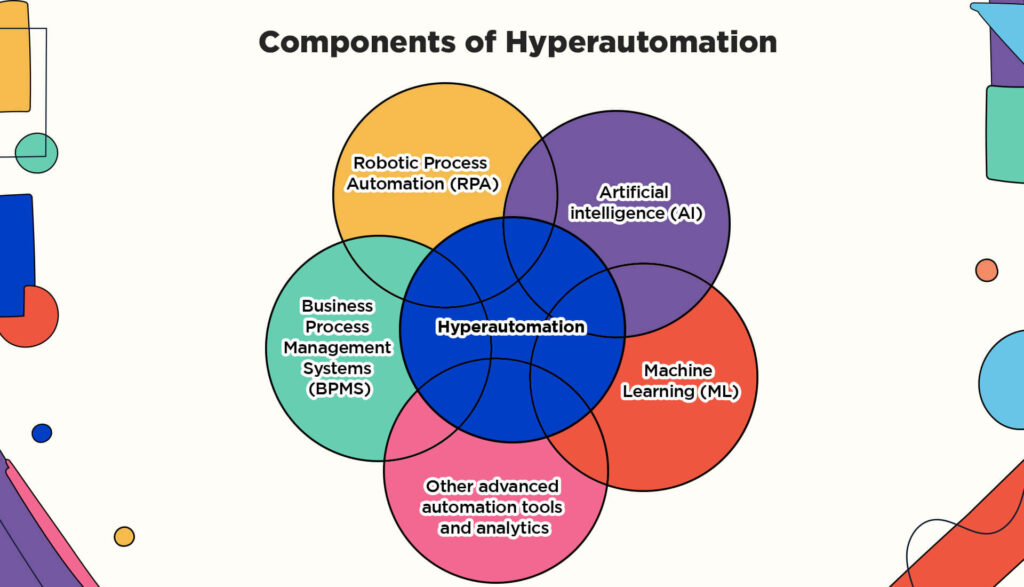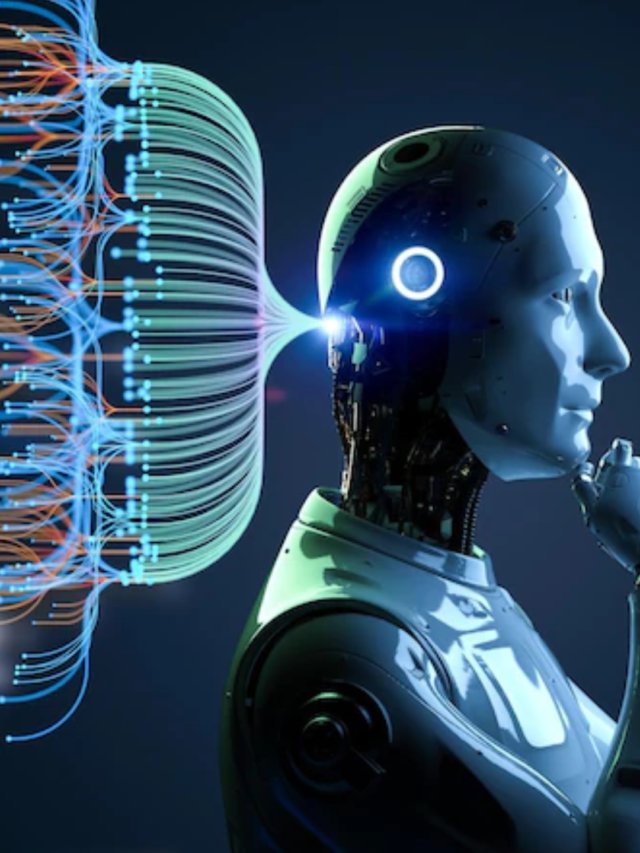
Humans have always employed machines to make manual and mundane tasks more effortless. Quite the commonplace term in today’s day and time, “automation” does not turn any heads. Enter “Hyperautomation”. It piqued your interest, didn’t it? Read on to know more.
Hyperautomation is the latest buzzword among tech savants. Hyperautomation topped Gartner’s list of strategic technology trends in 2020 and then again in 2021, and is raising eyebrows galore. It was only a matter of time before something groundbreaking appeared with the evolution of automation and the union of tools and technologies (interoperability).
What is hyperautomation?
The term ‘hyperautomation’ was coined in 2019 by Gartner, an IT research and advisory firm. Hyperautomation provides the means to strategically deploy various automation technologies separately or in tandem, augmented by AI and machine learning. It attempts to fill in the gaps and limitations that the use of robotic process automation (RPA) initially presented for automation across enterprises.
Complex as it sounds, it means that hyperautomation is a process of transcending automation as we know it by adding a layer of intelligence to it. Also called ‘intelligent automation’, it ventures into uncharted territory where digital platforms control entire business processes, direct human workflow, link similar tasks and automate them. Hyperautomation is essentially a manager in the form of a computer that uses artificial intelligence (AI), machine learning, robotic process automation, etc., to manage multiple businesses.
Automation vs hyperautomation—what is the main difference?
While not immediately apparent because both use many of the same tools and technologies, it might be easier to think of hyperautomation as a scaled, higher level of automation. Automation generally makes individual tasks more effortless, more cost-effective, and less in need of manual intervention. On the other hand, with hyperautomation, many related tasks can be automated, forming a link of intelligent automation, reducing human intervention to mere supervision.
Pros
Whether it is a fledgling business or a bigwig in the market, hyperautomation has something to offer both. The number one reason businesses fail, according to Gartner reports, is not keeping a log of completed tasks. The benefits of hyperautomation include improving business processes, eliminating repetitive tasks, and automating manual jobs. This offers accuracy, speed, and overall efficiency. In addition, hyperautomation reduces costs, improves customer satisfaction, and frees up more time for personnel to engage in more cerebral operations.
Data has been called ‘the next oil’. Most sectors and industries are data-heavy and require seamlessness to avoid errors that lead to massive losses. Hyperautomation, which uses artificial intelligence (to automate and understand processes), and machine learning (to detect patterns and learn from mistakes), helps handle data-intensive processes efficiently. Industries such as banking, supply chains, healthcare, manufacturing, and life sciences have already made the foray.

Cons
Futuristic technologies undoubtedly complement each other. However, it can be challenging to organise these technologies and reckon with their limitations. Some disadvantages of hyperautomation are the privacy risks that are inherent in any data-heavy technology. Training AI is bound to require initial inputs, and without proper safeguards, data thefts can be a real threat. While machines can be intelligent and insurmountable, specific tasks require human-in-the-loop solutions. Including a human would require the personnel to receive in-depth training in using these tools, which can be time-consuming and costly—off-setting some of the main benefits of hyperautomation. Customisability may also be affected by using technology that primarily aims at standardising and expediting. This may affect customer experience, making it harder to meet specific demands in the long run.
Need of the hour?
So, what propelled this zeal for a new and improved form of automation capable of taking over entire business processes? According to Gartner, “hyperautomation is an unavoidable market state in which organisations must rapidly identify and automate all possible business processes.” The COVID-19 pandemic affected the entire world, and no enterprise was immune to it. With work-from-home becoming the new motto, it became crucial to introduce a method for streamlining work. A transition to modern digital technologies, along with more engaging, improved, and intelligent ways of digitising and transforming the existing level of automation were no longer a luxury, but a necessity. With such conditions, it’s not surprising that businesses would prioritise measures that would maximise productivity, reduce costs, and help them gain a better, more competitive position in the market.
While it will invariably raise questions about employment and redundancies, Manjunath Bhat of Gartner seems to think that it can only help individual employees grow and improve. In his words, “Robots aren’t here to take away our jobs. They’re here to give us a promotion.” An interesting way to think about hyperautomation is by envisioning automation as an automatic coffee maker brewing your morning cup. Hyperautomation would be an intelligent, automated coffee maker with inbuilt timer settings that will have your brew ready at specific times of the day, at your beck and call. Hyperautomation may indeed be the future, and the future is now!



